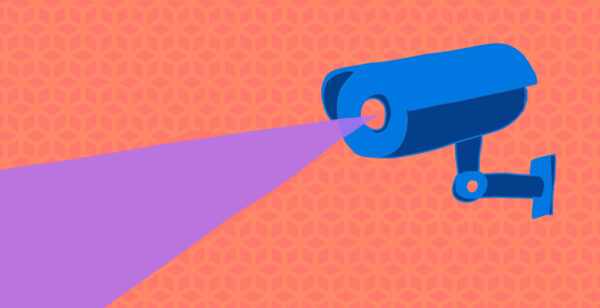A report from the New York Times referred to workplace surveillance as “unexpectedly common,” and it could be creeping into your office sometime soon. Phone tracking has been normalized throughout the years, as all companies keep an eye on who sends and receives calls on their work phones (in addition to internet surfing and text messaging). Even screenshotting software for work computers has existed for years. But since the pandemic, modern technology has taken a bit of a sinister turn, as employers simply don’t trust the work their employees are doing from home. What kind of impact does that have on workers, and why is it toxic to your workplace?
Modern employee surveillance in action
Employee surveillance is used on every type of worker from manual laborers to knowledge workers. There are A.I. cameras Amazon puts in their delivery vehicles that require drivers to submit their biometric data so their productivity can be tracked. There’s also “tattleware,” a cute name for software meant to “tattle” on your computer activity – though many employees have already outsmarted those systems by scheduling emails to be sent sporadically throughout work hours and buying mouse-jiggling or keystroke-hacking gadgets. Additionally, even within the office, there’s something called hyper-location monitoring in which Bluetooth signals given from a phone or a work badge can track where an employee is at any given time.
Why it’s bad
It might seem like there are a few other ways to keep track of your employees when everyone is dispersed due to remote working. But being a manager doesn’t mean being a tyrant, and when employees know they’re being watched and scrutinized, their experience is going to change drastically for the worse.
It doesn’t work
The worst part about workplace surveillance? You invest all that time and money in software to track your employees – and it doesn’t even work! Dozens of studies show that even the thought of surveillance causes stress and anxiety for those being surveilled. In a study of one call center that uses heavy-duty monitoring systems to track employees’ labor, 87 percent of the workers polled reported high stress levels, and 50 percent were on medication for anxiety. And we all know the effects that stress can have on productivity – the data on that is extremely telling. Another study found that when Chinese factory workers weren’t subject to surveillance, they were more productive than their peers who were. Those being watched were less creative, less efficient, and more overwhelmed.
It can be illegal
Next, you have to be careful with employee surveillance software, as some of it can tread the line between legal and illegal. Monitoring workplace communications are covered by the Electronic Communications Privacy Act of 1986 (ECPA) (18 U.S.C. Section 2511 et seq.), which includes protections against the invasion of privacy. The ECPA notes that one can only intercept their employee’s oral or electronic communications as long as the company can show that it was relevant to their business or that they received an employee’s consent to do so.
It destroys culture
There’s a reason that workplace surveillance programs have earned the nickname “bossware” – and that’s because employees believe that these programs have bosses delegating their micromanagement to A.I. in the laziest way possible. Antonio Aloisi and Valerio De Stefano’s book “Your Boss Is An Algorithm” talks a bit about how workplace surveillance tech hasn’t really been validated by peer-reviewed, independent research forums. And in fact, some studies say that it does the opposite; a 2020 poll of the U.K. Trade Union Council noted that 56 percent of employees found that the newly-installed worker monitoring systems tarnished the trust between employees and their employers.
What to do instead
Rather than passively managing through workplace surveillance, take an active role in your team’s work experience with the following tips.
Leave workers alone
You heard it here first: the best way to ensure that your workers are productive is to let them be. More than ten years ago, Best Buy tested out a Results-Only Work Environment that focused on worker freedom. And the result was that those who had no control over their schedules were stressed, while those who controlled their days were healthier, happier, and more productive. An employee deciding when they work might be the difference between slacking and working hard, so why judge productivity by how well someone is adhering to office hours?
Have honest conversations
Rather than passive-aggressively employing tracking software, be honest. If you think someone isn’t doing enough, isn’t responsive enough, or isn’t taking on enough responsibilities, just say something. While time tracking software can tell you if employees are lying about the hours they’re working, what doesn’t lie is the amount of work they’re producing. And ultimately, their contributions to the team are what really matters. A manager or boss should be surveilling the workplace in their own unique ways as opposed to delegating their employee surveillance responsibilities to A.I. in a way that doesn’t tell the whole story of someone’s work performance.
Get the right tech
Software that tracks how much your employee’s mouse is wiggling might seem like it’s a good way to track activity, but there’s much better tech out there to fill your productivity-measuring needs. Project management software can teach you where the gaps are in your processes and how to streamline them to save time. So rather than ensuring that your employees are working, give them access to tools that will enable them to work resourcefully.

